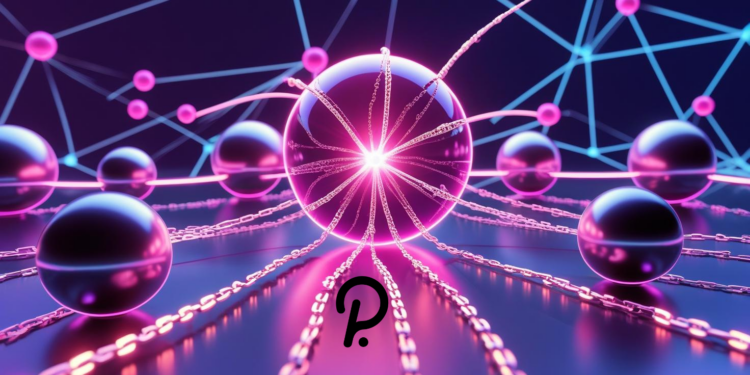The cryptocurrency world has expanded far beyond Bitcoin and Ethereum. Among the projects making waves is Polkadot (DOT)—a next-generation blockchain protocol designed to connect multiple specialized blockchains into one unified network. If you’ve ever wondered how different blockchains can communicate with each other without friction, Polkadot is the answer.
In this article, we’ll explore what Polkadot is, how it works, its unique features, why it matters in the blockchain ecosystem, and what role its native token DOT plays.
Understanding Polkadot: The Basics
Polkadot is an open-source blockchain platform developed by Dr. Gavin Wood, co-founder of Ethereum and former CTO of the Ethereum Foundation. Launched in 2020 by the Web3 Foundation, Polkadot was built with one major vision: enabling a decentralized web where users are in control.
Unlike traditional blockchains that operate in isolation, Polkadot is designed to solve one of the biggest challenges in blockchain technology—interoperability. It allows different blockchains (known as parachains) to communicate, share data, and transfer assets seamlessly.
Think of Polkadot as the “Internet of Blockchains”, where each chain can be tailored for a specific use case yet remain connected to the broader ecosystem.
Key Components of Polkadot
Polkadot’s architecture is unique and consists of several critical elements:
1. Relay Chain
- The core of the Polkadot network.
- Responsible for security, consensus, and cross-chain interoperability.
- Does not support smart contracts itself but ensures smooth communication between parachains.
2. Parachains
- Independent blockchains that connect to the Relay Chain.
- Can be optimized for specific purposes like DeFi, NFTs, supply chain, or gaming.
- Benefit from the shared security and interoperability of Polkadot.
3. Parathreads
- Similar to parachains but designed for projects that don’t need continuous connectivity.
- Operate on a pay-as-you-go model, making them cost-effective.
4. Bridges
- Allow Polkadot to interact with external networks like Ethereum, Bitcoin, or other blockchains.
- Expands the ecosystem beyond its native parachains.
How Polkadot Works
Polkadot uses a sharded multichain network. In simple terms, this means that transactions are processed in parallel across multiple chains, instead of one chain doing all the work.
Here’s the process:
- Transactions occur on parachains.
- These parachains send validated proofs to the Relay Chain.
- The Relay Chain finalizes the transactions and ensures consensus across the entire network.
This design allows Polkadot to achieve scalability, speed, and security without compromising decentralization.
Features That Make Polkadot Stand Out
- Interoperability – Different blockchains can talk to each other. For example, an NFT created on one parachain can be traded on a DeFi parachain.
- Scalability – Parallel processing across multiple parachains avoids network congestion.
- Shared Security – All parachains benefit from the Relay Chain’s robust security.
- Forkless Upgrades – Unlike Ethereum or Bitcoin, Polkadot can upgrade without hard forks, ensuring smooth transitions.
- Customizability – Developers can build parachains tailored for specific industries, from finance to healthcare.
What Is the DOT Token?
The DOT token is Polkadot’s native cryptocurrency. It serves three main purposes:
- Governance – DOT holders can vote on network decisions such as protocol upgrades and parachain auctions.
- Staking – DOT tokens are staked by validators and nominators to secure the network. In return, they earn rewards.
- Bonding – DOT is used to connect new parachains to the network through a process called bonding.
With these functions, DOT isn’t just a speculative asset—it plays an active role in the health and growth of the Polkadot ecosystem.
Polkadot vs Ethereum: How Are They Different?
Since both Ethereum and Polkadot share Gavin Wood’s influence, many people wonder: how are they different?
- Ethereum focuses on being a general-purpose blockchain for smart contracts and decentralized applications.
- Polkadot is designed as a multi-chain network that allows multiple specialized blockchains to coexist and interact.
In essence, Ethereum is a single city with many businesses, while Polkadot is an entire federation of cities connected by highways.
Real-World Use Cases of Polkadot
Polkadot isn’t just theory—it has practical applications:
- DeFi (Decentralized Finance) – Cross-chain lending, borrowing, and asset swaps.
- Supply Chain – Transparent tracking across multiple companies and industries.
- Healthcare – Secure sharing of medical data across hospitals while maintaining privacy.
- Gaming – NFTs and in-game assets that can move across different ecosystems.
- Smart Cities – Interconnected IoT devices running on different blockchains but working together through Polkadot.
Governance and Parachain Auctions
Polkadot has a unique governance model. Instead of centralized decision-making, DOT holders propose and vote on changes. This ensures the network evolves according to the will of its community.
Another fascinating aspect is parachain slot auctions. Since the number of parachains is limited, projects must bid for slots using DOT tokens. This creates a fair, competitive process where the most promising projects get to join the network.
Pros and Cons of Polkadot
Pros
- High scalability and efficiency
- Interoperability between blockchains
- Strong developer community and backing from Web3 Foundation
- Sustainable upgrade system (forkless)
- Active ecosystem with growing use cases
Cons
- Still relatively young compared to Bitcoin and Ethereum
- Complex governance and auction system may confuse newcomers
- Dependent on adoption of parachains for full potential
- Competing with other interoperability-focused blockchains like Cosmos
Future of Polkadot
The future of Polkadot looks promising. As the blockchain world moves toward Web3—a decentralized internet—Polkadot is well-positioned to be a key player. Its interoperability could make it the backbone of cross-chain communication, enabling a truly interconnected ecosystem.
Major updates, continued parachain development, and bridge integrations with networks like Ethereum and Bitcoin will further enhance Polkadot’s role. As more projects build on Polkadot, demand for DOT could increase, strengthening its position in the crypto market.
Conclusion
Polkadot (DOT) is more than just another cryptocurrency—it’s a revolutionary protocol aiming to connect blockchains into a unified network. By solving issues of scalability, interoperability, and governance, Polkadot has positioned itself as one of the most innovative projects in the blockchain industry.
Whether you’re an investor, developer, or just a curious learner, understanding Polkadot is essential for keeping up with the future of Web3. With its unique architecture, strong community, and real-world applications, Polkadot is paving the way for a more connected and efficient decentralized world.
Join Us : Twitter | Website | GitHub | Telegram | Facebook | YouTube

























